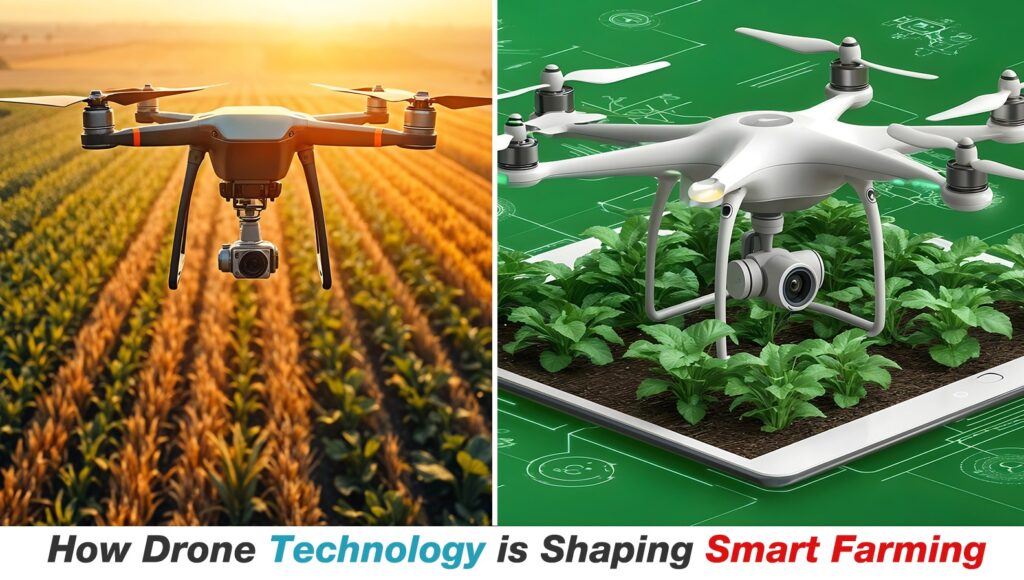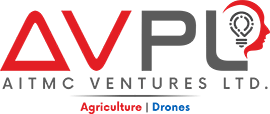
How Drone Technology is Shaping Smart Farming
The agricultural industry is undergoing a significant transformation, driven by technological advancements making farming more efficient, productive, and sustainable. Among these innovations, drone technology has emerged as a game changer, revolutionizing how farmers
monitor and manage their crops. By utilizing drones, farmers can enhance their decision–making processes, optimize resource use, and increase yields. In this blog, we will explore how drone technology shapes smart farming and the various applications that are making an impact.
1. The Rise of Smart Farming
Smart farming integrates advanced technologies into agricultural practices to improve productivity, efficiency, and sustainability. The concept encompasses various tools and techniques, including Internet of Things (IoT) devices, data analytics, and drones. As the global
population continues to grow, the demand for food is increasing, putting pressure on farmers to produce more with fewer resources. Drones offer a solution by providing real–time data and insights to help farmers make informed decisions.
2. Understanding Drone Technology in Agriculture
Drones, or uncrewed aerial vehicles (UAVs), can be operated remotely or autonomously. They are equipped with advanced sensors cameras to capture high–resolution images and collect valuable data from the fields. Various types of drones, including fixed–wing and multi–rotor
drones, are used in agriculture, each designed for specific applications.
Drones can be equipped with different types of sensors, such as multispectral and thermal cameras, which enable farmers to assess plant health, monitor irrigation systems, and evendetect pests and diseases. The data collected can then be analyzed to create actionable insights,leading to improved farming practices.
3. Key Applications of Drones in Smart Farming
3.1 Crop Monitoring
One of the primary uses of drones in agriculture is crop monitoring. Farmers can use drones to regularly inspect their fields and gather real-time data on crop health, growth stages, and moisture levels. High-resolution images captured by drones provide insights into plant health, helping farmers identify areas that require attention.
For example, multispectral imaging allows farmers to assess plants’ chlorophyll content, indicating their health and vigour. By identifying stressed areas early, farmers can take targeted actions, such as adjusting irrigation or applying fertilizers, maximizing crop yields, and reducing waste.
u
3.2 Precision Agriculture
Drones play a crucial role in precision agriculture, which uses data–driven techniques to optimize farming practices. With the data collected by drones, farmers can create detailed maps of their fields, showing variations in soil health, moisture content, and crop performance.
These insights enable farmers to apply inputs such as fertilizers and pesticides more accurately, reducing the overall amount needed while maximizing effectiveness. Fewer chemicals applied to the land lower costs and minimize environmental impact.
3.3 Irrigation Management
Efficient water management is essential for sustainable farming, and drones are helping farmers achieve this goal. Equipped with thermal imaging cameras, drones can identify areas of a field that are over or under-watered. By analyzing temperature differences in the crop canopy, farmers can determine where irrigation is needed and adjust their systems accordingly.
This targeted approach to irrigation conserves water and promotes healthier crop growth. Additionally, by monitoring irrigation systems from the air, farmers can identify leaks or other issues that may go unnoticed from the ground.
3.4 Pest and Disease Detection
Drones can be an early warning system for pest infestations and disease outbreaks. Farmers can quickly identify areas that may be affected by pests or diseases by regularly monitoring crops from the air. Advanced imaging technology allows drones to detect subtle plant colour and texture changes, signalling potential issues.
Early detection enables farmers to take timely action, whether applying pesticides or implementing integrated pest management strategies. This proactive approach helps prevent widespread damage to crops, ultimately safeguarding yields.
4. Benefits of Using Drones in Agriculture
4.1 Increased Efficiency
Drones significantly increase the efficiency of agricultural practices. By automating tasks such as crop monitoring and spraying, farmers can save time and reduce labour costs. Drones can cover vast areas in a fraction of the time it would take a person on the ground, allowing farmers to focus on other essential tasks.
4.2 Cost Savings
The data collected by drones enables farmers to make informed decisions that can lead to cost savings. By optimizing resource use, such as water and fertilizers, farmers can lower input costs while maximizing crop yields. The precision of drone technology also reduces waste, contributing to overall savings.
4.3 Enhanced Sustainability
Sustainability is critical in modern agriculture, and drones contribute to more sustainable practices. By promoting efficient resource use and reducing chemical applications, drones help minimize the environmental impact of farming. Moreover, drones’ data-driven insights enable farmers to adopt practices that enhance soil health and biodiversity
4.4 Improved Crop Yields
Drones help improve crop yields by providing farmers with real-time data and insights. Early detection of issues, precise input application, and optimized resource use all contribute to healthier crops and higher productivity.
4.5 Data-Driven Decision Making
Drones facilitate data-driven decision-making in agriculture. The data collected can be integrated with other technologies, such as farm management software, to provide a comprehensive view of farm performance. This empowers farmers to make informed decisions based on actual field conditions, leading to better outcomes.
5. Challenges and Considerations
Despite the many benefits of drone technology in agriculture, there are challenges that farmers must consider.
5.1 Regulatory Issues
Drone operations are subject to regulations that vary by country and region. Farmers must ensure compliance with local laws, which may include obtaining permits for commercial drone use and adhering to safety guidelines.
5.2 Initial Investment
While drones can lead to long-term cost savings, the initial investment can be a barrier for some farmers. Drones, sensors, and software costs can be significant, especially for small-scale farmers. However, as technology advances and prices decrease, accessibility is expected to improve.
5.3 Technical Expertise
Using drones effectively requires a certain level of technical expertise. Farmers may need training to operate drones and interpret the data collected. Partnering with agricultural technology providers can help bridge this gap and provide support.
5.4 Weather Dependency
Drones can quickly assess crop damage after adverse weather events or natural disasters. By capturing high–resolution images of affected areas, farmers can evaluate the extent of the damage and determine the best course of action. This rapid assessment helps farmers make timely decisions regarding replanting or applying treatments
Challenges and Considerations
5.1 Regulatory Issues
Drone operations are subject to regulations that vary by country and region. Farmers must comply with local drone use laws, which may include obtaining permits and following safety guidelines.
5.2 Initial Investment
The cost of drones and the necessary sensors can be a barrier for some farmers, mainly small–scale operations. However, as technology advances and prices decrease, the accessibility of drone technology is expected to improve.
5.3 Technical Expertise
Farmers may require training to operate drones effectively and interpret the data collected. Collaborating with agricultural technology providers can help bridge this gap and provide essential support.
5.4 Weather Dependency
Drones are sensitive to weather conditions, and adverse weather can limit their operation. High winds, rain, or low visibility can hinder data collection, requiring farmers to plan their flights accordingly.
Conclusion
Drone technology undeniably shapes the future of smart farming, providing farmers with innovative tools to enhance productivity, efficiency, and sustainability. By leveraging drones’ power, farmers can monitor their fields, optimize resource use, and make data-driven decisions that improve crop yields.
As the agricultural industry continues to evolve, the integration of drone technology will play a pivotal role in meeting the growing demand for food while minimizing environmental impact. Embracing this technology is not just an option; it is becoming necessary for farmers who wish to thrive in an increasingly competitive and resource-constrained world.
Farmers need to stay informed about drone technology advancements as we move forward and seek opportunities for collaboration and training. By doing so, they can fully harness drones’ potential and contribute to the ongoing transformation of agriculture into a more efficient and sustainable industry

